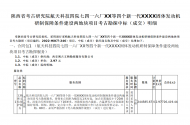I doubt that the aforementioned missile is JL-4, considering that JL-3 is meant to be carried by the 096 SSBNs. Is it normal for the next-gen SLBM (JL-4) to reach this developmental stage (i.e. a successful test flight), when the previous-gen SLBM (JL-3) hasn't even entered active service?bro you also mentioned next generation SLBM development other than JL-3 in your previous posts. could be JL-4 ..
diameter of 2.3 meters
View attachment 117635
View attachment 117636
You are using an out of date browser. It may not display this or other websites correctly.
You should upgrade or use an alternative browser.
You should upgrade or use an alternative browser.
China ICBM/SLBM, nuclear arms thread
- Thread starter Blitzo
- Start date
yeah agreed with your point here ..I doubt that the aforementioned missile is JL-4, considering that JL-3 is meant to be carried by the 096 SSBNs. Is it normal for the next-gen SLBM (JL-4) to reach this developmental stage (i.e. a successful test flight), when the previous-gen SLBM (JL-3) hasn't even entered active service?
copying another post of kalec sir here ..
CASC also working on new SLBM ..
********************************************
CASC is developing a new SLBM on their own. They took out the test in December 2021 but the research was published last week.
I originally thought it was new ICBM or some existing model being tested as baseline, but it turned out to be a SLBM engine from a research published by CASC's testing institute.
Also note how big ass the rocket engine is, compared with the gas storage chamber. The diameter of engine is definitely higher than the first floor of experimental platform, which is also higher than everyone in this picture. Safe to say it is an engine for SLBM not SLCM.
"In order to study the environmental adaptability of motor during the launching process of submarine-launched missiles, a gas impact test system was developed to simulate the dynamic pressure environment in the launching tube. Through mathematical model simulation analysis of the test system, and matching the appropriate volume of pressure storage chamber and impact chamber, tube diameter, exhaust hole, the gas pressure history curve can be simulated in the constant volume impact chamber."
if we follow all posts of Kalec, it is like 2 or 3 SLBM projects currently under development ..
I don't think the "JL-3" mentioned in Pentagon is the "JL-3" designated by PLAN, so I place them as "JL-3/4".bro you also mentioned next generation SLBM development other than JL-3 in your previous posts. could be JL-4 ..
diameter of 2.3 meters
Whatever it is, it is what it is. The diameter of 2.3m was directly sourced from bidding of 713rd Institute, the department responsible for designing naval launch system.
It is not about "whether" China should invest in larger SSBN, it is about what they are making out of. It is like I am really confused about why they are still developing a Sarmat alike for DF-5C/D but it is what it is. They are making progress and no sign of being stopped.
Updated:
Lmao they deleted the news. I guess someone punished for being too indiscreet, bad I didn't archive it.

There should be only one SLBM being developed.if we follow all posts of Kalec, it is like 2 or 3 SLBM projects currently under development ..
Two stage of solid boosters with a liquid PBV upon them, diameter of 2.3m, developed by CASC.
Note that they said the "strategic solid motors" development team was developing 5 of such engines.
Ideally 3 solid motors for ICBM "DF-4X/DF-45" and 2 solid motors for SLBM "JL-3/4", both of them should come with PBV.
Another indicator which I haven't posted here.
The title seems too innocent to be anything significant right? Only if someone knows how the existence of DF-41 got leaked back in 2012, it becomes even funnier that it was leaked by Archaeologist this time in 2022.
The confirmation of DF-41 back in 2012:
And if one compares the different part of these biddings between decades:
Construction of safeguard conditions for the development of XX and four next-gen XXXX solid engines at the 7416th plant of the 4th Academy of CASC.
Construction of safeguard conditions for the development of solid engines for XX-41 strategic missiles at the 7416th plant of the 4th Academy of CASC.

Sources:
航天科技四院七四一六厂XX等四个新一代XXXX固体发动机研制保障条件建设
Construction of safeguard conditions for the development of XX and four new-generation XXXX solid engines at the 7416th plant of the 4th Academy of CASC.
The title seems too innocent to be anything significant right? Only if someone knows how the existence of DF-41 got leaked back in 2012, it becomes even funnier that it was leaked by Archaeologist this time in 2022.
The confirmation of DF-41 back in 2012:
中国航天科技集团公司第四研究院七四一六厂XX-41战略导弹固体发动机研制保障条件建设
Construction of safeguard conditions for the development of solid engines for XX-41 strategic missiles at the 7416th plant of the 4th Academy of CASC.
And if one compares the different part of these biddings between decades:
Construction of safeguard conditions for the development of XX and four next-gen XXXX solid engines at the 7416th plant of the 4th Academy of CASC.
Construction of safeguard conditions for the development of solid engines for XX-41 strategic missiles at the 7416th plant of the 4th Academy of CASC.

Sources:
thanks for your precious knowledge and information ..Another indicator which I haven't posted here.
The title seems too innocent to be anything significant right? Only if someone knows how the existence of DF-41 got leaked back in 2012, it becomes even funnier that it was leaked by Archaeologist this time in 2022.
The confirmation of DF-41 back in 2012:
And if one compares the different part of these biddings between decades:
Construction of safeguard conditions for the development of XX and four next-gen XXXX solid engines at the 7416th plant of the 4th Academy of CASC.
Construction of safeguard conditions for the development of solid engines for XX-41 strategic missiles at the 7416th plant of the 4th Academy of CASC.
View attachment 117638
Sources:
sir it is kind of like an official statement of next generation heavy ICBM development ..
it is a silly question. but can you tell us, what could be the difference between DF-41 and next generation ICBM.. increase range and payload ?
So just to sum things up a bit - At present, China is expected to be developing:
1. 1x next-gen ICBM;
2. 1x next-gen SLBM;
3. 2x or 3x next-gen IRBMs (or derivatives);
4. 1x or 3x next-gen SRBM/MRBMs (or derivatives); and
5. An unknown number of hypersonic missiles.
Do I get this summary correct?
1. 1x next-gen ICBM;
2. 1x next-gen SLBM;
3. 2x or 3x next-gen IRBMs (or derivatives);
4. 1x or 3x next-gen SRBM/MRBMs (or derivatives); and
5. An unknown number of hypersonic missiles.
Do I get this summary correct?
Last edited:
This sounds like a reasonable estimate.So just to sum things up a bit - At present, China is expected to be developing:
1. 1x next-gen ICBM;
2. 1x next-gen SLBM;
3. 2x or 3x next-gen IRBMs (or derivatives);
4. 1x or 3x next-gen SRBM/MRBMs (or derivatives); and
5. An unknown number of hypersonic missiles.
Do I get this summary correct?
Larger in diameter, either 2.3m or 2.65m. It really doesn't matter, 320 of ICBMs is well enough for over 1,000 warhead even if there is no new ICBM.What could be the difference between DF-41 and next generation ICBM.. increase range and payload ?
Larger payload. It is almost definitely the next-gen ICBM will have more payload capacity than DF-41 which is up to three RVs. In fact it might not need mount more RVs but more decoys. For example, 3 real RVs with 10 decoys will greatly increase the penetration ability. The loading capability will tell the US politician to stfu if they think of loading more RVs on Sentinel to achieve nuclear supremacy.
Less personnel to operate them. It is very important to reduce the ratio between operators and missile, one cluster will operate hundreds of ICBM and it used to be 12 per brigade.
Better guidance system. DF-31 need external guidance assistance to launch, greatly increase the counter strike time window.
DF-41 overcomes it by introducing "Three-autonomy" (autonomous function test, autonomous error calibration, autonomous original alignment) meaning it needs much less support vehicles to launch.
New guidance system aimed to achieve new "Three-autonomy" called "self-navigation, self-control and self-reconfiguration"
In short, it is expected to be lighter, more accurate and re-targetable. It could be the first time that China has real ability to conduct counterforce strike. (though unlikely on current posture)
Source: "A New Generation Inertial System for Strategic Missile" written by the deputy director of 13th Academy of CASC which has been responsible for designing guidance system since day 1 of Chinese missile industry back in 1960.
Seems true to me.So just to sum things up a bit - At present, China is expected to be developing:
1. 1x next-gen ICBM;
2. 1x next-gen SLBM;
3. 2x or 3x next-gen IRBMs (or derivatives);
4. 1x or 3x next-gen SRBM/MRBMs (or derivatives); and
5. An unknown number of hypersonic missiles.
Do I get this summary correct?
Larger in diameter, either 2.3m or 2.65m. It really doesn't matter, 320 of ICBMs is well enough for over 1,000 warhead even if there is no new ICBM.
Larger payload. It is almost definitely the next-gen ICBM will have more payload capacity than DF-41 which is up to three RVs. In fact it might not need mount more RVs but more decoys. For example, 3 real RVs with 10 decoys will greatly increase the penetration ability. The loading capability will tell the US politician to stfu if they think of loading more RVs on Sentinel to achieve nuclear supremacy.
Less personnel to operate them. It is very important to reduce the ratio between operators and missile, one cluster will operate hundreds of ICBM and it used to be 12 per brigade.
Better guidance system. DF-31 need external guidance assistance to launch, greatly increase the counter strike time window.
DF-41 overcomes it by introducing "Three-autonomy" (autonomous function test, autonomous error calibration, autonomous original alignment) meaning it needs much less support vehicles to launch.
New guidance system aimed to achieve new "Three-autonomy" called "self-navigation, self-control and self-reconfiguration"
In short, it is expected to be lighter, more accurate and re-targetable. It could be the first time that China has real ability to conduct counterforce strike. (though unlikely on current posture)
Source: "A New Generation Inertial System for Strategic Missile" written by the deputy director of 13th Academy of CASC which has been responsible for designing guidance system since day 1 of Chinese missile industry back in 1960.
Thanks, this all makes sense, and if the news/test you describe is indeed DF-4X/45, then it would actually somewhat track with the progress of the 300 silos across their various fields.
If the combination of construction of new warheads + development, static testing and flight testing of the actual delivery vehicle stages are true, then the new silos may not have to wait as long as perhaps initially expected when the silos were first sighted.
